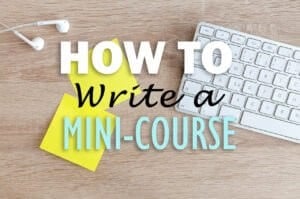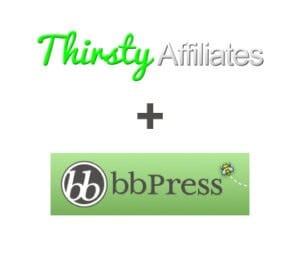Inhalt
Die meisten Menschen halten E-Mails für ein einfaches Kommunikationsmittel. Damals mag das auch so gewesen sein. Aber heute können Affiliate-Vermarkter diese technologische Innovation nutzen, um Geld zu verdienen und Verkäufe zu generieren. Der einzige Haken ist, dass es nicht so einfach ist, ein paar gut formulierte E-Mails pro Tag zu versenden.
Wenn Sie mit Partnerprogrammen Geld verdienen möchten, sollten Sie verschiedene Methoden der Produktwerbung ausprobieren, um zu sehen, was funktioniert und was nicht. Eine Methode, die sich für viele Online-Unternehmer bewährt hat, darunter die Digital-Marketing-Gurus Pat Flynn und Neil Patel, sind E-Mail-Minikurse.
Was sind E-Mail-Mini-Kurse?
Sie wissen bereits, was eine E-Mail ist. Sie wissen auch, was ein Kurs ist. Ein E-Mail-Kurs ist eine Kombination aus beidem. Dabei werden kleinere Pakete mit wertvollen Informationen in Form einer Serie versendet.
Ähnlich wie bei einem Universitätskurs, bei dem man mehrere Klassen von Anfang bis Ende durchläuft, werden Sie auch bei E-Mail-Kursen ein bestimmtes Thema von Anfang bis Ende in mehreren E-Mails durchnehmen. Sie sind wertvoll, enthalten viele nützliche Informationen und sind oft kostenlos.
Vorteile eines Minikurses
Abgesehen von der Möglichkeit, eine Welle von Leads für Ihre E-Mail-Marketingkampagne zu gewinnen, bieten Minikurse viele weitere Vorteile. Hier sind einige von ihnen:
- Sie schaffen Autorität - Seien wir doch mal ehrlich. Wenn Sie einen Kurs haben, klingen Sie wie eine große Nummer. Sie können dies zu Ihrem Vorteil nutzen, um Autorität bei den Lesern aufzubauen.
- Es ist wahrscheinlicher, dass Sie erinnerte - Es ist dasselbe wie bei einem Freund, der ständig mit Ihnen in Kontakt bleiben möchte. Je öfter sie Ihren Namen in ihrem Posteingang sehen, desto wohler fühlen sie sich bei Ihnen.
- Es ist eine großartige Möglichkeit, für fast alles zu werben. - Ob Sie nun ein Affiliate-Produkt oder ein Webinar bewerben wollen, Sie können sie sicherlich beiläufig oder thematisch in Ihren Minikursen erwähnen.
Schreiben Sie Ihren eigenen Mini-Kurs
Was zu lehren ist
Bevor Sie einen Kurs erstellen, müssen Sie sich zunächst überlegen, was Sie unterrichten wollen. Das Thema muss wertvoll sein, Ihre überragenden Kenntnisse, Fähigkeiten und Fertigkeiten zur Geltung bringen und idealerweise die Nachfrage nach einem längeren, umfassenderen Kurs wecken (falls Sie einen solchen haben oder erstellen möchten).
Ein Beispiel wäre die Erläuterung des Warum und Wie der Erstellung eines Redaktionsplans für Ihre Blogbeiträge. Dies ist für fast jeden relevant, der eine Website besitzt und mit Blogbeiträgen Geld verdienen möchte. Eine weitere großartige Idee ist es, Schmerzpunkte anzusprechen und dann Lösungen anzubieten.
Um ein Gefühl dafür zu bekommen, für welche Themen sich Ihre Leser bereits interessieren, gehen Sie Ihre alten Beiträge durch und schauen Sie, was bei ihnen wirklich gut ankam. Es ist fast eine Garantie, dass sich diese Leute auch für Ihren Kurs anmelden werden.
Beispielhafte Titel für Mini-Kurse:
"Der 10-Tage-Kurs für Lead Generation Landing Pages"
"Publikumsaufbau 2.0"
"Der Idiotenkurs zur Generierung von Traffic aus Social Media Posts"
"Online Geld verdienen in 30 Tagen"
"Umstellungsoptimierung 101"
Auswahl der zu fördernden Produkte
Wenn Sie bereits an einem Partnerprogramm teilgenommen haben, können Sie Produkte vermarkten, die mit den Kursen in Zusammenhang stehen. Sie können sogar anders an die Planung herangehen, indem Sie zuerst entscheiden, welche Produkte Sie verkaufen möchten, und sich dann ein Kursthema ausdenken, in dem diese Produkte erwähnt werden können.
Die E-Mail und die Kursdauer
Ich erinnere mich an einen Kurs, der 60 Tage dauerte. Ich schaffte es nur bis zum 15. Tag, bevor ich ihn abbrach. Ein Problem, das ich damit hatte, war, dass der Inhalt nicht fesselnd war. Das andere, offensichtlichere Problem war, dass er einfach zu lang war.
Empfohlene Kursdauer: Ein großartiger Minikurs überfordert die Leser nicht. Legen Sie einen Kurs fest, der zwischen 5 und 10 Tagen dauert. Sie können ihn auch auf bis zu 20 Tage ausdehnen, wenn Sie von Anfang bis Ende einen guten Fluss aufrechterhalten können.
Empfohlene Wortzahl: Ideal ist es, die Anzahl der Wörter zwischen 500 und 1.000 Wörtern zu halten. So haben Sie genug Platz, um Ideen zu erörtern, fundierte Ratschläge zu geben und Ihr Partnerprodukt zu bewerben.
Bilder und Überschriften verwenden
Ob Sie Bilder in Ihrem Minikurs verwenden sollten, hängt von Ihren persönlichen Vorlieben ab. Manchmal ist es notwendig, visuelle Darstellungen zu liefern, um eine Idee zu verstärken. In anderen Fällen sind sie dazu da, die E-Mail ästhetisch ansprechend zu gestalten. In der Regel sollten Sie Bilder nur dann verwenden, wenn sie einen Mehrwert für den Gesamtinhalt darstellen.
Überschriften sorgen dafür, dass das gesamte Format übersichtlich und gut gegliedert ist. Stellen Sie sicher, dass Sie eine Überschrift (oder Zwischenüberschrift) verwenden, wenn Sie von einem Thema zum nächsten übergehen. Dadurch sieht Ihre E-Mail nicht nur besser aus, sondern lässt sich auch besser lesen.
Und was nun?
Sie haben nun das Ende unseres Leitfadens erreicht. Das bedeutet, dass Sie so ziemlich alles wissen, was es über das Schreiben eines tollen Minikurses für die Bewerbung von Affiliate-Produkten zu wissen gibt. In der Tat, können Sie auf das Schreiben Ihrer eigenen jetzt beginnen!
Denken Sie daran: Die besten E-Mail-Kurse sind in der Regel die einfachsten. Seien Sie geradeheraus mit Ihren Ideen, bieten Sie Informationen, die sie nirgendwo anders finden können, und halten Sie die Dinge immer interessant, damit sie nicht auf die Schaltfläche "Abmelden" klicken.



